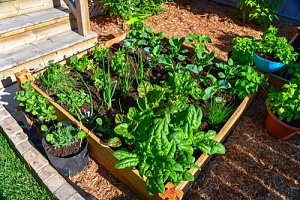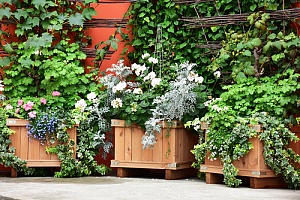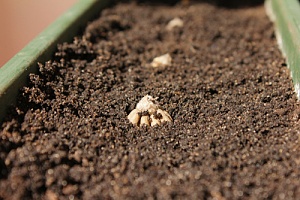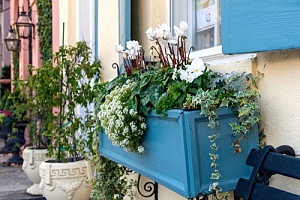 A shortage of space is an issue that many people encounter when they want to tackle creative projects for their homes. The limited space can feel like a limitation on your creativity. There are some solutions to this dilemma. If you want to plant a garden but don’t have the space to do it, then building a planter box can be a creative way around the lack of space.
A shortage of space is an issue that many people encounter when they want to tackle creative projects for their homes. The limited space can feel like a limitation on your creativity. There are some solutions to this dilemma. If you want to plant a garden but don’t have the space to do it, then building a planter box can be a creative way around the lack of space.
There are different options of planters box to choose. Finding the right one for your yard can save you space and allow you to plant more greenery. However, with any DIY project, there are instructions and considerations to follow and think about before beginning.
This article will give you some design ideas and help you take your space and preferences into consideration. It will also teach you how to build a planter box in your yard. Whether you want a large option or a mini one for inside use, you can have the plants that you want without using a ton of space.
Measure and Design
With so many planter box options out there to choose from, you will want to decide what kind of style you like to narrow them down. Do you want a large option that has tiers for multiple plants, or a planter box that will fit on your backyard railing for saving space? These are some of the design questions to consider.
Also, depending on the space you are working with. You may have a limit on the options that are not built into the ground. Such as ones that are connected to windows or hang from your patio roof. You will need to measure whatever space you want to fill to determine how much space you truly have and figure out what you will be able to do with it.
Choosing Material
Choosing what type of planter box you want will help inform your decision on what kind of material to use. Although wood might be the first material you think of, not all planters need to be made from wood. In fact, with ceramic, bamboo, glass, and even vinyl gutter material, you can have your pick from a variety of choices.
 If you want a long-lasting option that will work outside, then wood will likely be the way to go. Be careful though, some woods will not last as long as others. How you want your planter box to look is another consideration. For example, if you would like to have an Asian-inspired garden, then building a bamboo planter box may fit your aesthetic better.
If you want a long-lasting option that will work outside, then wood will likely be the way to go. Be careful though, some woods will not last as long as others. How you want your planter box to look is another consideration. For example, if you would like to have an Asian-inspired garden, then building a bamboo planter box may fit your aesthetic better.
If you would like to have a planter box that can attach to the side of your railing, then using vinyl gutter material can get the job done without risk of harm by weather conditions. What the weather’s like in your area and how the material will stand up to it will help you decide the best option for your planter box.
To Stain or Not to Stain Wood Materials
Wood comes in a variety of colors, you can choose to have the color you want. If you are a fan of lighter colors of wood, then stains will darken the wood to a shade that you may not like. Ff you find that a wood you aren’t fond, then you can stain the wood to your desired color.
It is important to note that wood stain does add a layer of protection to the wood. If you are not going to put a sealant on the wood, then a stain will help the planter box last longer. When it comes down to it, this is mostly left to personal preference.
Consider Plant Needs
When learning how to build a planter box, you want to understand what the plant needs from it. How you make the planter box can be helpful to the plant’s growth. Some plants need lots of sunlight and with an open planter box design, you can give that sunlight to the plant.
 A major consideration for your plants should be what kind of soil you plant them in. Poor soil quality can keep new seeds from germinating and growing. Screened topsoil is the best choice as objects that prevent growth are filtered out of the dirt.
A major consideration for your plants should be what kind of soil you plant them in. Poor soil quality can keep new seeds from germinating and growing. Screened topsoil is the best choice as objects that prevent growth are filtered out of the dirt.
If a plant needs a lot of drainage to keep from being overwatered, then a planter box with a solid bottom will not work well. A vinyl gutter material is solid. So if you are using this material, you will need to cut holes in the bottom to allow for drainage for plants.
Knowing the specific needs of the plants you will transplant is important. Knowing what the best planter will be for each plant will help you decide which option is best.
Placement and Permanence
Knowing where you will place the planter box is something that should be decided before you start to build. If you have limited space and want a larger option, this is particularly important. Taking up too much room will likely lead to having to make adjustments, which just adds more work to your plate.
Also, knowing if you want to reposition the planter box later will affect the build as well. A mini planter, like a small ceramic bowl, is easy to move. A planter that needs to be screwed to a railing or part of the house will be more difficult to move. Deciding where you want the planter will allow you to attach it securely or allow for movement if necessary.
Consult with Experts to Make Sure You Nail It
 Contact Dirt Connections today for consulting on the best finished planter box. The professionals can help guide your plants to help them grow to their fullest.
Contact Dirt Connections today for consulting on the best finished planter box. The professionals can help guide your plants to help them grow to their fullest.
Summary

Dirt Connections was started with one goal in mind: providing quality residential and commercial construction services to clients on time and on budget. Reach out for more information on how we can support your next project.
For your convenience our estimates are free and by appointment. Call 703-940-9949 for a free estimate today!










































